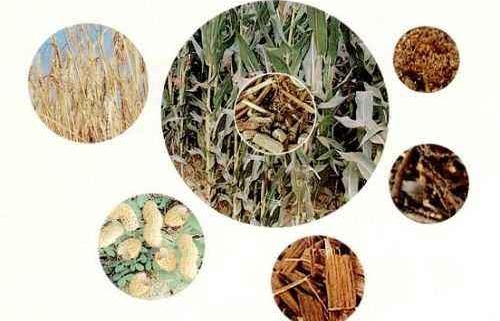Biomass refers to various organisms produced through photosynthesis using the atmosphere, water, land, etc., that is, all living organic matter that can grow is collectively called biomass. It includes plants, animals and microorganisms. Broad concept: Biomass includes all plants and microorganisms, as well as animals and food wastes produced by plants and microorganisms. Representative biomass such as crops, crop waste, wood, wood waste and animal waste. Narrow concept: Biomass mainly refers to lignocellulose (such as lignin) in the agricultural and forestry production process, except for grain and fruits, straws, trees, etc., agricultural industry waste, agricultural and forestry waste, and poultry in the production process of livestock. Animal manure and waste. Features: renewable, low pollution, widely distributed.
According to different sources, biomass suitable for energy use can be divided into five categories: forestry resources, agricultural resources, domestic sewage and industrial organic wastewater, municipal solid waste, and livestock and poultry manure.
Forestry biomass resources refer to the biomass provided by forest growth and forestry production processes, including fuelwood forests, non-educational wood in forest tending and thinning operations, residual branches, leaves and sawdust, etc .; during wood harvesting and processing Branches, sawdust, wood layers, tips, slabs and carriers; wastes from forestry by-products, such as shells and kernels.
Agricultural biomass resources refer to agricultural crops (including energy crops); wastes from agricultural production processes, such as crop straws (corn straw, sorghum straw, wheat straw, straw, bean straw and cotton straw) Etc.); waste from the agricultural processing industry, such as rice husks left over from agricultural production. Energy plants broadly refer to a variety of plants used to provide energy, usually including herbaceous energy crops, oil crops, hydrocarbon-producing plants and aquatic plants.
Domestic sewage is mainly composed of various drainages from urban residents’ living, business and service industries, such as cooling water, bath drainage, toilet drainage, laundry drainage, kitchen drainage, and fecal sewage. Industrial organic wastewater is mainly wastewater discharged during the production process of alcohol, brewing, power, food, pharmaceutical, papermaking and slaughtering industries, etc., which are rich in organic matter.
Municipal solid waste is mainly composed of solid waste such as urban household solid waste, commercial and service waste, and a small amount of construction waste. Its composition is relatively complicated and is affected by factors such as the average living standard of local residents, energy consumption structure, urban construction, natural conditions, traditional habits, and seasonal changes.
Livestock and poultry manure is a general term for livestock and poultry excreta. It is a transformed form of other forms of biomass (mainly grain, crop straws and pastures, etc.), including manure, urine and its mixture with bedding. Biogas is a kind of combustible gas converted from biomass energy, which can usually be used by farmers for cooking and lighting.



